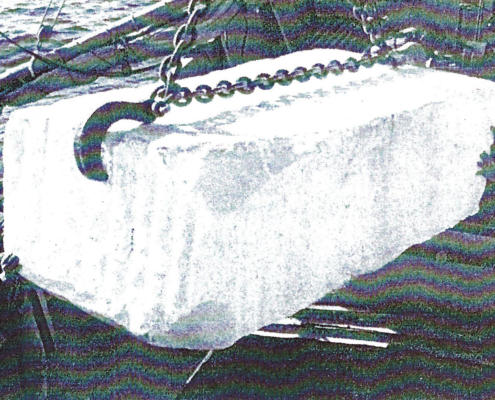Entrance of quarry in Paros
Source: CHOISEUL-GOUFFIER, Gabriel Florent Auguste de.
Voyage pittoresque de la Grèce, Paris, J.-J. Blaise, M.DCC.LXXXII [=1782].
Aikaterini Laskaridis Foundation Library
The Quarries in Marathi
An extensive complex of quarries for opencast and underground extraction of the famous Parian marble, the so-called Paria Lithos, was developed in Marathi in antiquity (mainly from the 7th century BC onwards). Today it is known that the quarries covered a vast area that included, in addition to the most famous quarries of the Nymphs and Pan, the underground quarries in Spilies, and the areas of surface extraction on the hill of Lakki and at Thapsana.
This activity was of great economic, social and cultural importance for Paros, which developed into one of antiquity’s most important artistic centres. This excellent quality marble was widely used in architecture and sculpture to create unique art masterpieces.
During the 19th century, the Belgian Company and the Hellenic Marble Company of Paros attempted to re-exploit the quarries, an attempt which was eventually abandoned. However, the removal of huge quantities of debris and chip stones from inside the quarry of the Nymphs gave access to its deeper sections, resulting in the understanding of its structure in a way that was not possible even during its period of operation in antiquity.
In the 19th century, several buildings were also constructed to serve various functions as part of the re-exploitation plan and are preserved in various conservation states. Typical are the two winch stations (varoulkostasia, buildings with special mechanical pulling devices to transport the marble to the surface) at the exits of the quarry of the Nymphs, the marble-cutting complex, which is the largest and best-preserved, the buildings housing the workers etc.
The area of the ancient quarries has been declared an archaeological site since 1974, while in 2000, the declaration was extended, and more precise demarcation of the boundaries was made. The area of the 19th-century marble quarries and related facilities was designated a “historical place” in 2018.
A video produced during the exploratory visit of the Intelligent Interaction Group, Department of Cultural Technology and Communication, University of the Aegean






